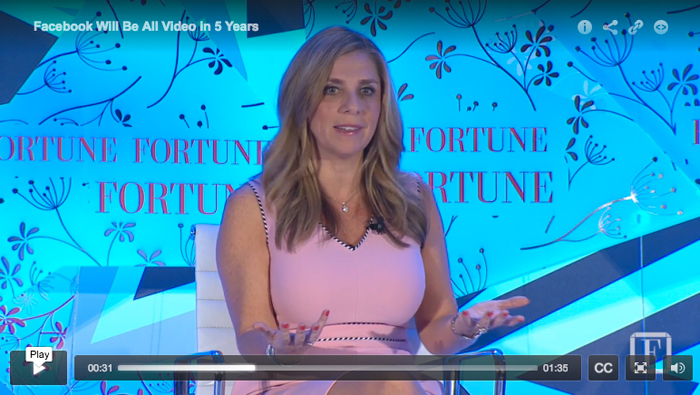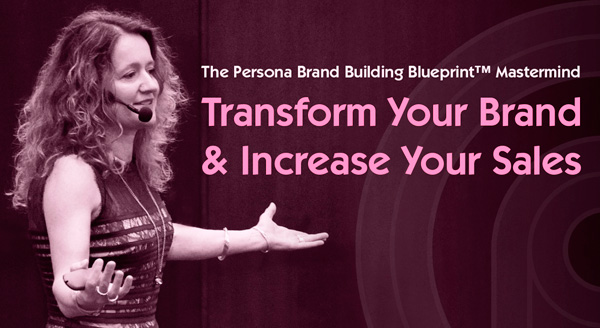8 Huge Branding Trends in 2018: What’s New and Valuable?
/0 Comments/in Branding Trends /by Lorraine CarterBranding trends can have a lasting and permanent effect on your business. The future of your business depends on a compilation of factors, but mostly on you. It’s not the market situation or “bad luck” that make businesses fail. Most of the time businesses fail because of faulty decisions made by their founders and management team. But what exactly informs decisions making? There are several factors that typically influence business decisions from, competitor activities, to a target audience, technology and, of course, branding trends.
People thrive on trends. What’s new? What do I need to know to improve my offering? Where do others find success, and how can I use those findings and apply them to my brand? Trends dictate the general direction in which the field is heading. Trends are not strict rules, rather they are observations of reoccurring themes, but with time some trends become an indispensable part of our everyday reality.
Let’s see why, as a business owner, entrepreneur or brand manager, you should follow branding trends:
Why follow branding trends?
Branding has always been a complex field. In the past few years though the branding landscape has become even more complicated. Consumers are well aware of the latest technological advancements and want brands to be the pioneers of the digital revolution.
Additionally, it’s easier than ever to start and market a business. Social media and content marketing are the marketing techniques that any business, large or small, can leverage and invest in to grow exponentially. As a result, the competitor landscape has expanded from once being a very small space, ruled by a few large conglomerates, to more of a levelled playing field with an endless ocean of millions of small businesses with relatively equal access to the latest technological developments in marketing.
Consequently, following branding trends is a must for every business that wants to survive in this new cut-throat competitive environment so they can effectively cater to their ever-changing customer needs.
Top 4 Reasons to Monitor Branding Trends
Here are all the specific reasons why you should follow branding trends:
1. Keep a Close Eye on What Competitors Are Doing
When Nike ran a series of events across major cities in Europe, the company didn’t expect that brands like Adidas and Reebok would quickly follow with similar promotional offers.
What was once a distinguishing trait of Nike’s marketing, has become the expected norm of every other sports brand out there. So Nike changed their brand strategy once again and launched a free training programme instead. As a result, the Nike brand topped brand intimacy ratings[1] and consequently, the loyalty of its customers remains unwavering. So how did Nike achieve such enviable success?
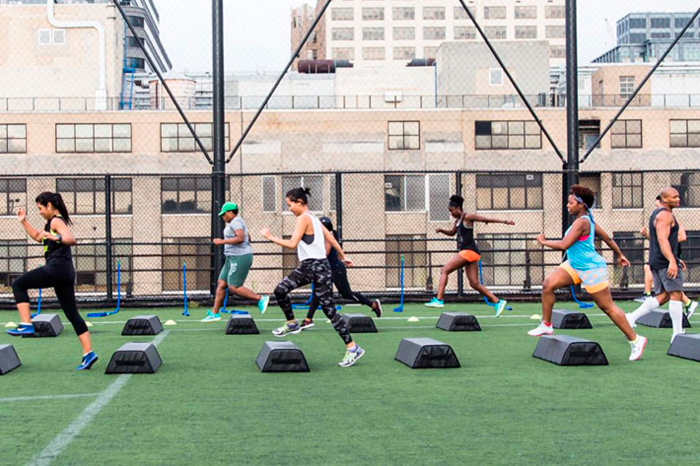
Image via The Cut
You can start a trend and then all of a sudden find your strategy duplicated by thousands of other brands. While being a trend inventor or setter is challenging, if constant innovation is part of your culture you can position yourself as an industry leader. Trends, therefore, help you monitor and evaluate what others are doing. Once your strategy becomes obsolete, you’ll be forced to push your company towards further innovation or wither and fade.
Related: Brand Disruption, Be the Disruptor or Be Defeated
Adidas and Reebok rankings are high too, so, apparently, it never hurts to replicate someone else’s success occasionally. This is where the knowledge of brand trends becomes important too — trend identification provides an easier and more straightforward way to leverage competitors’ wisdom to promote your brand effectively.
2. Source Creative Ideas for Inspiration
We’re all creative in some form, it’s just sometimes it’s more of a struggle to be really creative. Most business owners are so entrenched in the day to day grind that they forget how to generate new ideas or block off time to think and feed their natural creativity.
Some find the right people to run the administrative and operational side of the business while they focus on the bigger pictures. Others are happy to be the jack of all trades. If you’re a small business owner you most likely associate yourself with the latter type. This means that your creativity might be somewhat stifled by the busy operational aspects of running the business so it’s essential to put time aside for critical and creative thinking if you’re to continue to grow.

Free Commons License Image via Pixabay
Trends are great for getting your creative juices flowing again. By simply feeding your brain and reading about trends you generate new ideas, be they NPD, running the business or market-related. You can also formulate a clear vision of where your company should be heading. Trends are overarching themes that can be found in the present but take shape in the future. By evaluating trends, researching, mixing and matching, you can develop your own winning strategy to propel the business forward to greater success.
We’re all busy and following branding trends might not be the first task on your to-do list. If you need professional help and want access to a detailed overview of the branding industry, book one of our transformational workshops and masterclasses. These workshops empower you to raise the visibility of your brand, increase sales, reduce customer acquisition costs and position your brand as the №1 choice for your customers. Check out the Persona Brand Building Blueprint™ Mastermind here.
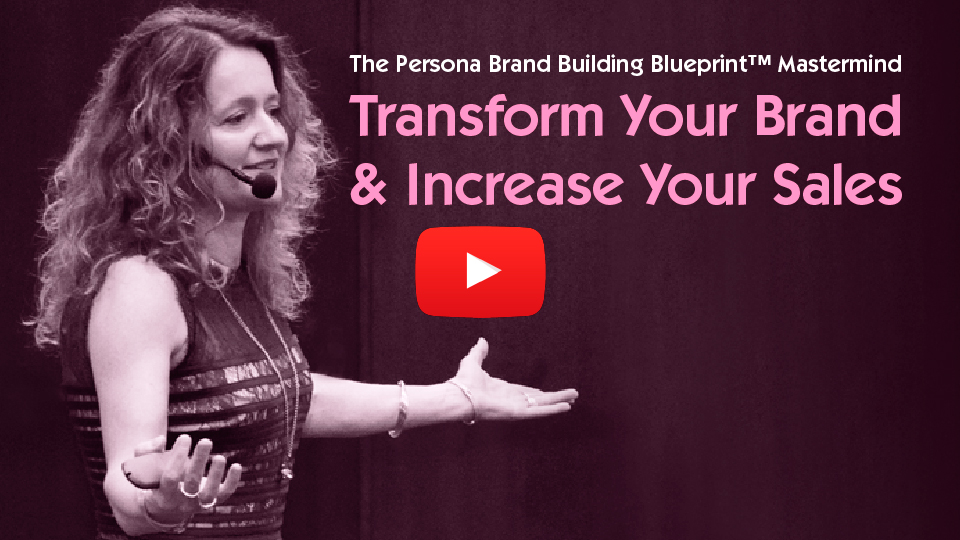
Build your standout brand at the Persona Brand Building Blueprint™ Mastermind with Lorraine Carter
3. Stay Relevant in The Ever-Changing Market
“You don’t have to advertise a good party; a good party advertises itself” – these were the words of Bill Svoboda at Inman Connect[2]. Same applies to companies. A great company can sell its product solely by the word of mouth. But what makes up a great company? Products, customer services, vision and the ability to innovate, in other words, generate a feeling of novelty and excitement in customers.
Relate: Brand Innovation – How to Identify New Growth Opportunities
People are naturally drawn to novelty. According to psychological research[3], new things make us feel good. When you follow branding trends, you can easily pick up on new things and apply them to your business. Whether it’s a fresh perspective on your brand or an advanced marketing technique, trends enable you to deliver offerings that are bound to attract attention because of their novelty factor.
4. Avoid Uninformed Decisions
Branding trends not only shape the company’s product offering but also dictate how the company’s environment looks. When you make business decisions it’s important to understand the internal as well as external factors. What expectations do customers have? What are the technological advancements you can use in your branding? Are there any innovative ways to market your business? If you understand the branding landscape and follow branding trends, it increases your ability to make the right decisions because you’re better informed by a broader range of influential factors.
Related: Rebrand or Refresh? That is the Question
As you can see, by diligently following branding trends you can improve your decision making. To access a comprehensive overview of the branding industry, join one of our transformational workshops and masterclasses. These workshops are packed with content that enables you to define, articulate, and differentiate your brand, as well as put branding trends to use for growing your business.
You can also purchase access to the Personality Profile Performer™Programme – an exclusive DIY programme for self-learners. As a part of the programme curriculum, you’ll discover how successful brands and branding works so you can apply those systems and processes to grow your business faster and more profitably.
Top 8 Branding Trends in 2018
Here we review the key branding trends of 2018 together with actionable examples of successful application to learn from:
1. Brands Humanisation
Branding is no longer a one-way street of push communications. Customers want real conversations and seek connection. In the past brands would push messages out to the masses and wait for a response. Because the number of brands was so minimal, push tactics worked. Nowadays, there’s an exponential number of brands all vying for customer attention and wallet share. So, just like in a real human conversation, you need to both share and listen. If you want to be heard as a brand, you’re expected to act like an authentic human.
Having a conversation with brands is one side of brand humanization. Another factor relates to brand identity. Brands are expected to not only act as humans but also be human. In 2018 brands need to have a strong personality and exhibit empathy. This can be achieved by developing a strong set of brand values and well-differentiated tone of voice.
Related: How to Develop Your Brand Tone of Voice to Increase Sales
Brand humanization doesn’t mean that you need to start a personal brand. Rather it means that you need to establish a real connection between you and your customers. This connection can take different forms.
Consumer research[4] shows that there are three dimensions to brand humanization.
- Sometimes consumers perceive brands as having human forms – they see brands as a set of personality characteristics, values, likes, and dislikes.
- Other times customers see brands as an extension of themselves, associating brands with their own personality.
- Finally, some customers see the relationships they have with brands analogous to their relationships with real people.
For an example of brand humanization check out this video from Progressive Casualty Insurance. The video features an upbeat character Flo, who represents the company’s values. The company is making a concerted effort to associate its brand with a real human being.
This is the most straightforward way to humanize a brand, but, of course, there are nuanced ways too. Consistent communication in social media, excellent customer experience and speaking like your customers using their language are all key elements of brand humanization.
2. Experience Economy
The experience economy term refers to a structural change in the economy that has been underway for the past several decades. The experience economy is being shaped by many factors and technology is one of them. Technology has put an emphasis on experiences as opposed to owning things. In 2018 this trend will remain prevalent.
In 2017 we have seen brands step up their marketing game with creative experiences. One of such brands is Campari. The company set up a masterclass event on a narrowboat during London Design Festival. The improvised pop-up bar offered everyone the chance to create a Campari cocktail and learn the history of the brand. Campari’s pop-up shop is a wonderful example of a brand experience created not to sell, but to educate and engage customers.
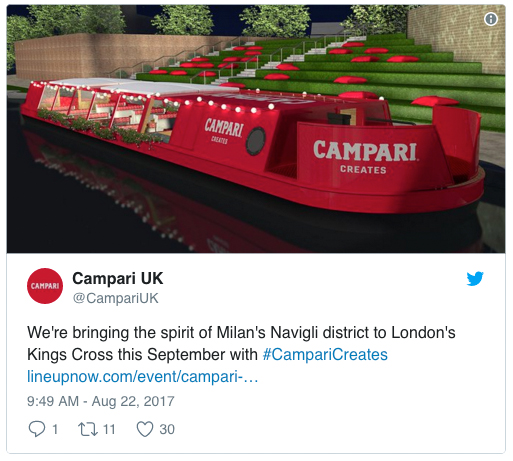
Image via Campari Twitter
3. Focus on Purpose and Relevance
Creating a strong clear brand purpose in 2018 is a must for every business. If you truly want to earn customer trust and loyalty you’ll have to put equal weight on societal interests coupled with your business goals. Customers prefer meaningful interactions that contribute to the greater good rather than just a one-time surge of happiness following the purchase.
There are numerous rankings that show the value of purpose[5]. The World Value Index measures brands on awareness of purpose. You’ll see companies such as Amazon, Google, Dove, and Microsoft occupying first places in this ranking. These are also amongst the world’s most valuable brands from a financial point of view. Clearly, having a brand purpose and showing your brand’s dedication to it pays off in the long run.
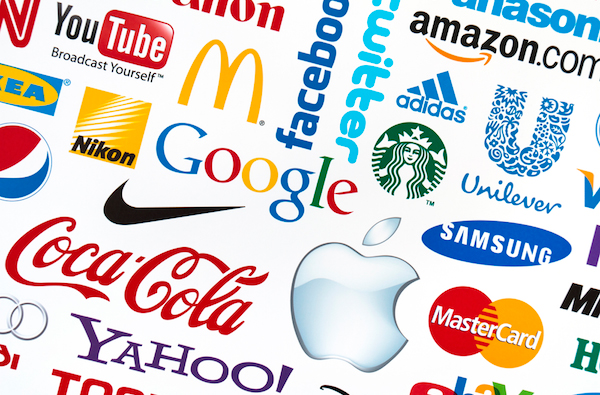
Image via Adweek
Related: Purposeful Brands, Why Customers Are Prepared to Pay More
In 2017 numerous companies attempted to show their dedication to purpose. Consider the case of 84 Lumber company. The brand ran a video during the Superbowl, that depicted a Mexican mother and daughter embarking on a journey to the United States. “The journey of the mother and daughter was a demonstration of the human spirit — grit, determination and hard work,” said the company’s CEO Maggie Hardy Magerko. “These characteristics represent what makes 84 Lumber and our country great. We want people that embody those characteristics, no matter where you’re from. If that’s you, our door is open.” The video gained controversial reviews, yet, it’s a great example of a company taking a stand on the matters that deeply affect their vision and purpose.
4. Build Brand Micro-Moments
As mobile is replacing regular desktop devices, the way consumers search for information is changing. We used to have long web browsing sessions. But today we’re interacting with the web through swift but very productive queries. These interactions can take place at any moment of our lives – when we wake up, have breakfast and on our way to work. We no longer see the web as a separate entity but perceive it as an indispensable part of life.
There are hundreds of moments each day where we stop and ask Google questions. And some of these questions are related to purchasing decisions. Queries such as “nearest coffee shop, “how to write a book” present opportunities for marketers to offer products at the exact moments when those products are needed. These opportunities are called micro-moments.
In 2018 micro-moments will conquer the branding space. People no longer see the internet as a source of entertainment. Now they want valuable, educational materials on top of having access to entertaining options.
The successful businesses of 2018 will take advantage of micro-moments and develop brand strategies to meet customer needs instantly, no matter where and when they arise.
Here is how micro-moments work: the moment you enter a query into a search bar, Google assesses your location and shows you the nearest coffee shops. Companies will have to embrace local marketing and SEO to reach first page rankings in local search. In future, micro-moments will dictate how companies approach customers.[6] Direct pitches and mass messages are things of the past. Predicting customer needs, identifying micro-moments and presenting results when and where customers need them will become a priority for every business that wants to succeed.
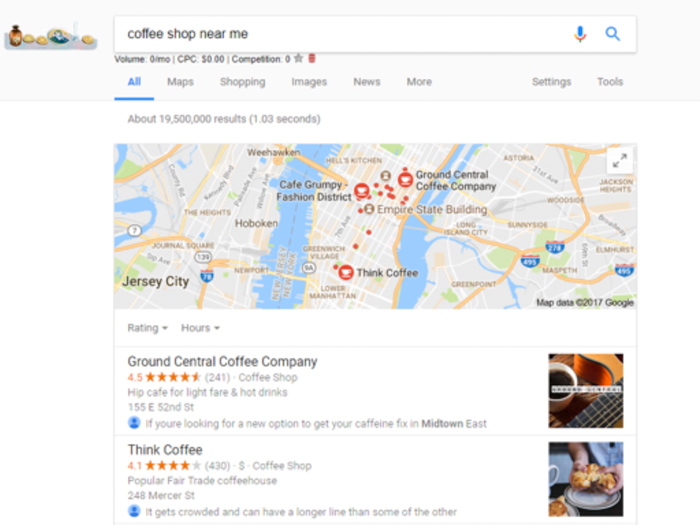
5. Brand Activism
Brands often shy away from politics and social issues. These fields are so full of conflict that it could be suicide for a brand to express political views. However, in 2018 customers are expecting brands to voice their opinions and express their mission loud and clear.
People no longer believe that business should remain silent. They want truthful conversations where brands claim their allegiance to one or the other camp. This, of course, presents an enormous challenge for brands.
Related: How to Use Brand Activism to Mobilize Your Customers
However, brands like Patagonia don’t shy from taking a stand when the issue lies at the heart of what they stand for as evidenced by their recent reaction to President Trumps decision. In fact, their activism is a rallying cry for their core target audience who believe what they believe and are consequently loyal, long-standing customers—their brand champions.
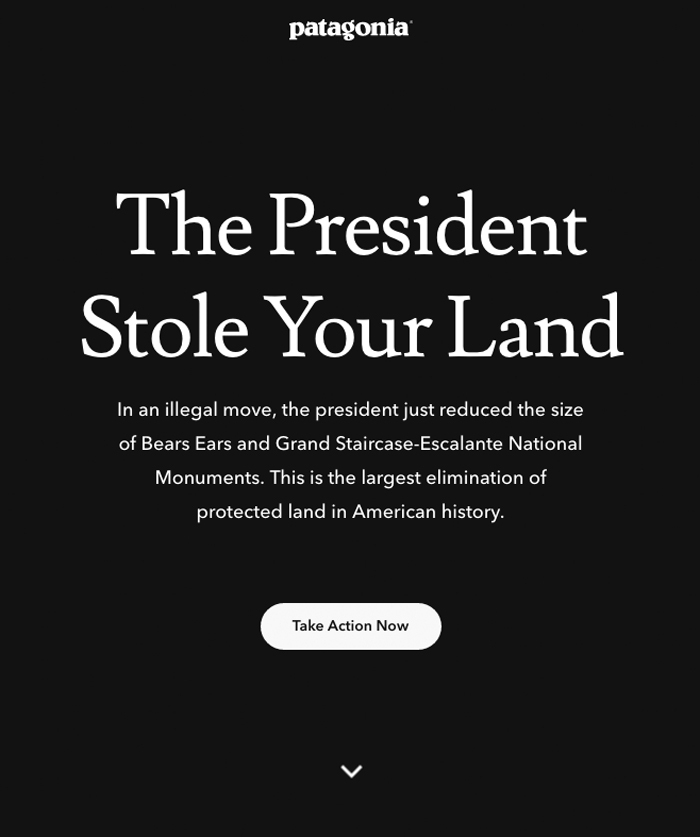
Image via Patagonia
According to Refinery29, 91% of millennials will swap a brand for the one supporting a compelling cause. In fact, not taking a stand could be the cause of negative impact on a company’s bottom line. Brands like Nike, Apple and Google are stepping up against the bigotry and discrimination. When the big brands make their move, they change overall customer expectations. Thus, in 2018 it will be important for every brand to speak up and support a cause congruent with its core brand values.
Related: Social Responsibility, How to Build a Socially Conscious Brand
SME/SMB business owners too have the power to fight for what they believe in. Consider the case of The Willary. The owner of the company wrote a short blog post where she gives a clear and actionable advice on what to wear to Women’s March. The post shows that the company supports an important public cause while also providing the readers with nonintrusive product suggestions.
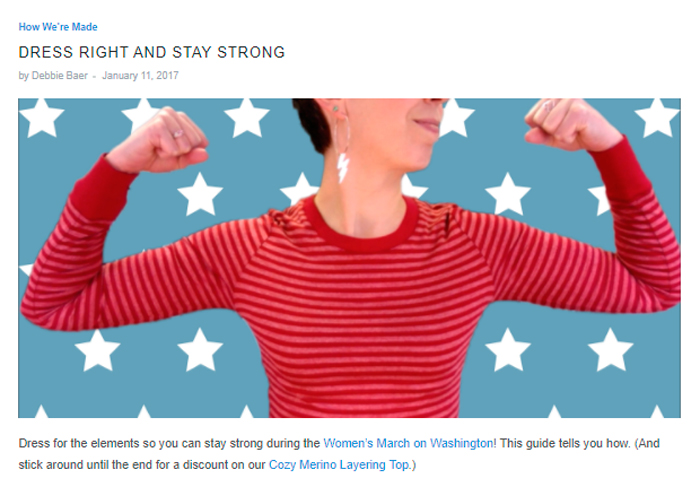
Image via The Willary
6. 360-Degree Immersive Branding
This trend builds upon the trends of brand humanization and the experience economy. Technology advancements often dictate how brands conduct their branding and marketing activities. With the advent of AI and AR, the landscape of branding changes from being static and product-driven to being focused on experiences and personalization.
Brands have long been more than just companies. Business presents a certain power in the world, and with power comes responsibility. Consumers in 2018 want brands to become their guides in the world of technology. Fortunately, technology also provides a great opportunity for companies to acquire and retain a loyal following.
The applications of technology are numerous. From chatbots that act and think as humans to immersive 360-degrees visual experiences, technology enables your brand to become more human and delight your customers.[7]
Related: Using Video To Broadcast Your Brand Message So You Attract Your Ideal Customers
Starbucks is already trying to benefit from this trend. Last year the brand revealed a chatbot barista that can take online orders. The app creates an illusion of a real human interaction on top of simplifying the process for ordering a drink – you can order online and pick up the drink without having to queue or wait in the line. This is a truly immersive experience, that delights customers from start to finish.
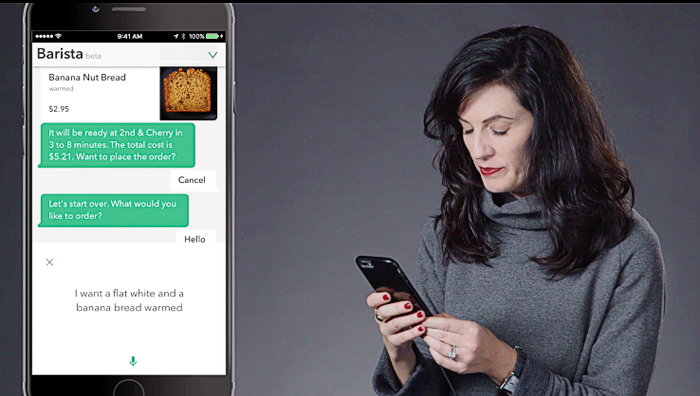
Image via TechCrunch
7. Branding That Resonates with Customer Psychology
Brands are increasingly turning to advancements in neuroscience to understand consumer behaviour so they can find new ways to promote their products effectively. Companies historically sought their market knowledge and research findings by conducting regular customer surveys. However, now business owners are realizing that surveys don’t provide very accurate insights because consumers use their rational minds when they answer the questions, but when they purchase products they succumb to the power of the emotional brain.
In 2018 sciences like anthropology and psychology will become more important. Neuroscience can reveal deeper insights about the consumer and help marketers craft more impactful messages.
Related: Use Psychology in Your Brand Strategy to Create Irresistible Brand Experiences and Increase Sales
Sometimes neuroscience can be used as a marketing method. Check out how Avocados from Mexico centred their marketing campaign at SXSW around happiness as an emotion. Customers of Avocados used giant interactive touchscreens to place customer orders. While they were waiting for their order, a unique facial tracking app was busy registering their facial expressions. If they appeared happy long enough, they were rewarded with an animation.
8. Branded Communities
The last trend of 2018 refers to social media and its place in the branding world. Social media is mostly perceived as a marketing instrument where engagement and conversations rule. However, social media can become a powerful tool in branding as well.
In 2017 we’ve seen brands launching their own communities dedicated to a niche topic. Conversation in social media has changed from pushing your own content and waiting for people to like it to creating an engaging environment for everyone to contribute.

Image via Facebook
The branded community enables you to position yourself as an expert and post occasional promotional messages. Branded communities are effective because the concept implies that everyone in the community is equal. This removes barriers and makes people more relaxed. In 2018 we’ll see more branded communities on social media because they’re a great way to engage your audience without being too salesy.
Related: Personal Branding: We Are All CEOs (Part 1)
A Final Word on Brand Trends
Understanding brand trends is a big part of business success. When you follow relevant trends you’re better prepared for market volatility triggered by, for example, changes in customer expectations and competitor behaviour. 2017 has been packed with groundbreaking changes, from digital transformation to focus on brand purpose. In 2018 we’ll see these trends growing stronger coupled with the emphasis on real human connection and experience-based interactions with customers.
If you’d like to know more about the latest advancements in the branding field, check out one of our transformational branding workshops and masterclasses. On top of providing you with invaluable information about branding trends, these workshops enable you to increase customer loyalty, grow market impact and make your brand highly visible. Check out the Persona Brand Building Blueprint™ Mastermind here.
Alternatively, take a look at our Personality Profile Performer™Programme – a simple way to transform your brand without leaving your home or office. It’s a unique step-by-step brand building ecourse that empowers you to make your brand stand out and attract your ideal audience.
Questions to consider:
- How often do you check branding industry news?
- When you see branding trends and news do you evaluate about how to apply them to your brand strategy?
- How would you determine a short-lived tendency from a promising trend?
- What are the fields that influence branding industry apart from marketing and technology?
- Does following trends help brands stand out or blend in?
[1] http://wwd.com/fashion-news/fashion-scoops/nike-brand-loyalty-consumers-followed-by-levis-under-armour-10482190/
[2] https://www.inman.com/2017/09/25/how-to-stay-relevant-in-an-ever-changing-market/
[3] http://www.dana.org/News/Details.aspx?id=43484
[4] http://www.sciencedirect.com/science/article/pii/S1057740816301061
[5] http://enso.co/worldvalue/
[6] https://www.thinkwithgoogle.com/marketing-resources/micro-moments/future-of-marketing-machine-learning-micro-moments/
[7] https://hbr.org/2017/06/when-ai-becomes-the-new-face-of-your-brand
Top 7 Branding Trends in 2017
/1 Comment/in Branding Mastermind, Branding Trends, Business, Innovation /by Lorraine CarterWith each December comes the inevitable look back at what we’ve learned in the year that was, as well as a look forward with predictions of trends aplenty. The business of branding is no different, although there is a constant in branding that we draw your attention to, namely: brand identity, including packaging, design, and naming — in amongst all the other rapidly evolving branding trends.
Does Branding Defy Fads?
Branding is different to other businesses in one very important way. That is, brands are everything and everything is a brand. A brand is alive and must be fed and nurtured to stay healthy and grow.
“A brand is a living entity – and it is enriched or undermined cumulatively over time, the product of a thousand small gestures.” – Michael Eisner, Disney CEO, 1984-2005 |
Therefore, a professional brand audit, occasionally leading to a brand refresh encompasses essential elements such as brand identity, packaging, design, and naming. Such is the tender loving care that must take place regularly and diligently throughout a brand’s lifetime.
A popular blog post: Brand Audits — How to Use One to Grow Your Profits
That being said, let’s look at a curated collection of where branding trends are heading in 2017, at smaller trends within the bigger branding picture that apply to SMEs / SMBs as well as to larger companies and services.
7 Branding Trends for 2017
Brands Focus on Building Connections, Not Sales
Over the past five years or so, the meteoric rise in social media has taught us that all media is social. All the one-way streets leading from healthy brands to their audiences have been resurfaced and re-routed to accommodate two-way traffic. Your brand has a story to be told…and sharing it is all about the customer journey: building connections, not hard selling.
Two-way communications, humanizing the brand, authenticity, and personalization are the buzzwords that are absolutely here to stay as the customer experience is firmly the heart of the brand in 2017.
Read more in this blog: Brand Stories: Critical to Brand Growth Strategy
Employees Gain Clout as Brand Ambassadors
Forget the ivory tower. In 2017, more and more brands of all sizes will invest and train to inspire, empower, and develop employees as the outstanding front-facing line of brand ambassadors. Frankly, no one is more invested in seeing the company successful and the brand be well-liked than the people who work in its name. And, no one is better at circulating good news, cementing relationships, and drumming up loyalty.
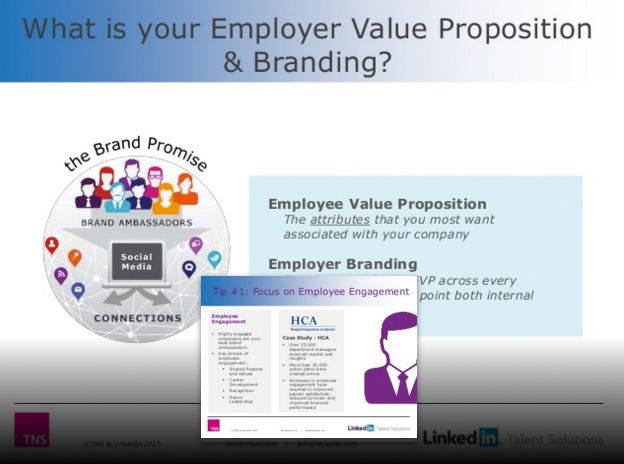
Image via Linkedin Talent Blog
“Customers are really interested in connecting with empowered employees who are the subject matter experts, not brand spokespeople or brand marketeers.” – Eric Nystrom, Director of Social Media and Community at Dell |
Check out: The Best Brand Ambassadors Are Already on Your Payroll
Brand Messaging and Storytelling is Increasingly via Video
Video will be all the rage in 2017, as smaller brands play catch up by learning that it’s entirely possible to produce short videos with a smartphone on a shoestring budget.

Did you know? Publishers report that 85 percent of Facebook video is watched without sound.[1]
Over the past year, we’ve watched video become an important, powerful medium for businesses, with the introduction of Facebook Live mushrooming views from 1 billion to 8 billion year-on-year.
In mid-2016, Facebook’s Nicola Mendelsohn, VP for EMEA, predicted the platform will be “all video” in less than five years, with plenty of immersive 360-degree and virtual reality experiences going forward.
See the Fortune interview on the future of video here.
In an Omni-Channel World, Brands Leverage Mobile-First Communications
With smartphones in their pockets, your customers are always on. Therefore you want to be where they are. After all, Google has a mobile-first strategy and so should every brand, even if their bricks-and-mortar premises closes for the day…or there’s a blackout?

Image via Flickr 2.0, Marcin Wichary
Case Study in Real Time: It was 2013 — such a long time ago in “high tech years.” You’re watching the SuperBowl on TV while simultaneously tweeting conversations about its highlights. Suddenly, inside the New Orleans Super Bowl dome, they experience a blackout that ends up lasting for 34 minutes. Here’s how one brand famously jumped into the real-time, multi-channel, mobile-first arena with lightning fast and ultra-clever messaging:
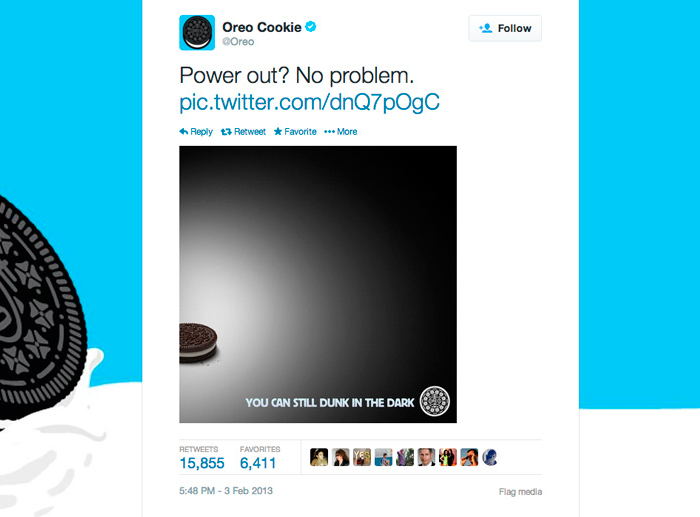
Image via Oreo on Twitter
The ad world reckons the Oreo brand got more oomph from this one tweet than from their multi-million dollar Super Bowl television commercial.
Today, thanks to algorithms, machine learning, data collection and analysis, real-time brand messaging evolves into right-time / right-place / right-person / right-interests brand messaging, as personalization is the overarching trend.
Brands Use Data to Increasingly Personalize Customer Experiences
If you’re still asking whether localized branding is frightful or insightful, 2017 will surely settle the score in favour of the latter.
Your phone will vibrate as you walk close to a coffee shop selling your favourite roast. And, why not? If you’ve shopped there before, the push notification with a special offer for a hyper-personalized outreach by the brand (the coffee roast, or the coffee shop, or even the brand of doughnuts they sell) is easily done. Local marketing, re-targeting, and “near me” moments are being leveraged by SME brands and hundreds of mobile apps.
According to eMarketer, the majority of U.S. marketers intend to allocate more of their budgets to customer loyalty in 2017, and about 13 percent said they anticipate significant increases in spending on such programmes.[2] (Survey: CrowdTwist in partnership with Brand Innovators) |
Brands Focus on Sustainability and Going Green
Three big name fashion brands: H&M, Zara, and Benetton “have worked hard over the past few years, banning hazardous chemicals from their production,” reports Greenpeace International[3] in their latest Detox Catwalk index.
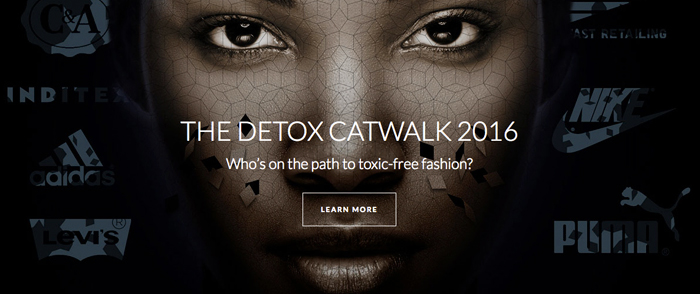
Image via Greenpeace International, Detox Catwalk
Consumers are being heard loud and clear on performance with a conscience. Sustainability matters. Supply chains matter. Food and material sources matter. Energy savings matter. Eco packaging matters. CSR matters.
Find out more: Brand CSR – The Business Case for Successful Branding and Social Good
Brand pioneers paving a path to an environmentally-friendly, greener future will be joined by many more in 2017.
Sixty-eight percent of online shoppers say purchasing eco friendly products is important to them. – Consumer Behavior Report by PriceGrabber.[4] |
Learn more: Eco Packaging: Essential for Your Profitability and the Environment
Brands Develop a Gen Z Voice
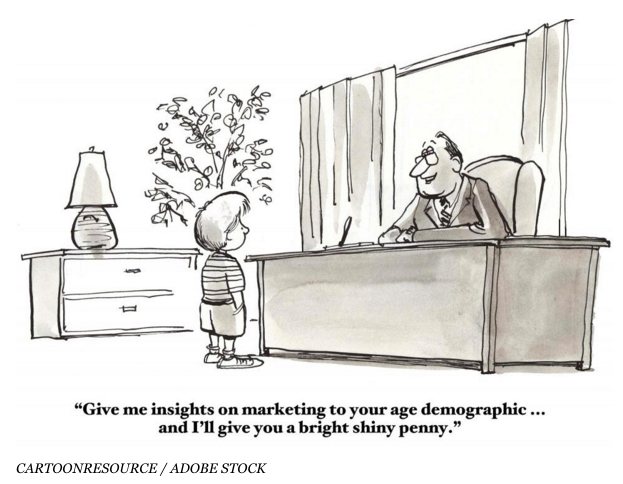
The demographic cohort following Millennials, tagged Generation Z, are “the next big retail disruptor,”[5] catching the attention of consumer brands beginning in 2017. As the oldest of America’s 75 million Millennials reach their mid-30s, the oldest Gen Z-ers are graduating from college. This expanding cadre of teen digital natives who cannot remember a time before social media and smartphones are being called “Millennials on steroids”[6] and 2017 is the year when brands will be figuring out how to communicate and what resonates with this cohort.
“A good brand-advocacy strategy is a must-have when it comes to dealing with Gen Z.” – Forbes[7] |
In Summary: The 2017 Branding Trends Landscape
It may seem like a tall order, but hey…2016 was no bed of roses, either. Stuart Sproule, Landor’s president of North America, sums it up in the branding agency trends watch, “Digital, Physical, And Everything In-Between.
Sproule says, “We are seeing the most complex brand landscape ever. Consumers want the latest in technology, more personalized experiences, more opportunities to interact – all in a more simple, streamlined process. Brands will need to be agile and adapt to changing demands, but they will also have to go a step further. These trends signal greater consumer involvement in how products and services engage them. Brand managers will have to be less rigid and more open to input from both internal and external audiences.”[8]
And the good news…we’re here to help!
If you want direction and support transforming your brand so it fully embraces changing trends then the Persona Brand Building Blueprint™ Mastermind is the perfect fit for you.
This is a two-day brand building intensive shared with a small group of like-minded peers where you work on your brand with our leadership. In fact over the two days you re-evaluate your brand and create your brand strategy from the ground up whether you’re revitalising an existing brand or creating a new one.
At the end of the two-day Persona Brand Building Blueprint™ Mastermind you leave with your fully documented brand strategy ready for development and implementation in your business or organisation. If your team is larger and you’d like to include everyones participation in the Persona Brand Building Blueprint™ Mastermind then we also run in-house private client brand building intensive programmes too. Just drop us a line or give us a call to discuss your preferences and we’ll develop your brand building intensive bespoke to your particular brand requirements.
Questions Brand Owners and Managers Might Ask About 2017 and Branding Trends:
- When was the last time we undertook a professional brand audit?
- Did we successfully reach new customers in 2016? How does our lead generation strategy fit within the changing brand trends of 2017?
- Does our content marketing strategy incorporate video?
- How well does our brand messaging reflect our customers’ wants and needs?
- Does our 2017 Brand Strategy Plan need dusting off?
- Is our brand packaging up-to-date and eco friendly?
[1] http://digiday.com/platforms/silent-world-facebook-video
[2] http://www.adweek.com/socialtimes/rachel-newton-sessionm-guest-post-2017-predictions-mobile-marketing-loyalty/647832
[3] http://www.greenpeace.org/international/en/news/Blogs/makingwaves/detox-fashion-brands-toxic-pollution-ranking/blog/56910
[4] http://bit.ly/2fLT4Ho
[5] http://www.nytimes.com/2015/09/20/fashion/move-over-millennials-here-comes-generation-z.html?_r=0
[6] https://www.salesforce.com/blog/2016/01/generation-z-millennials-on-steroids.html
[7] http://www.forbes.com/sites/laurenfriedman/2016/10/04/why-brands-should-be-fighting-for-gen-zs-attention/2/#39286e565ee3
[8] http://landor.com/thinking/trend-watch-2017-digital-physical-everything-between
What Women Want: Brand Buying Power in 2016 and Beyond
/0 Comments/in Brand Affinity, Brand Profiling & Positioning, Brand Strategy, Branding, Branding Trends, Business, Market Demographics, Market Insights, Market Psychographics, Market Research, Target Market /by Lorraine CarterThe percentage of purchases decided by women translates into a staggering $18 trillion in earnings worldwide for businesses.
More than half of key purchasing decisions are made by women today, product or service. The question is have you tailored your brand to meet their needs? Does the positioning, style, story, tone and focus of your brand messaging capture their attention in a way that’s truly relevant to them? Have you factored in meeting the needs for the discerning female factor if you’re going to successfully capture the attention of this very influential audience and convert their attention into growing sales?

Image via www.bloomberg.com
With more women in the workforce, the increase in female purchasing power has significantly changed the market and consequently how successful brands engage with them. Only recently, a friend who works with Audi, mentioned how the brand is now considerably more female centric in its focus, brand strategy and how they engage this very discerning audience in their various showrooms, together with the rest of their overall brand strategy. The reason is simple, women are now becoming their primary buyers — “they don’t have to go home and ask their husbands, or significant other, about which car to buy, they simply take out their credit card and pay”. Since women make 85% of all purchase decisions today, this is not hard to fathom anymore.
Whether we realize it or not we live and work in an “experience economy”, so identifying, understanding and connecting with the changing needs of your shifting female audience, on their terms, is essential to your brand success.
Take for example, the Super Bowl adverts in the U.S. They’re not just about the ballgame and beer anymore. In 2015 the Super Bowl was seen by 114 million viewers, together with all the advertising campaigns run in conjunction with the big event. As per Nielsen reports, 47% of these viewers, which is close to 54 million, were women. Clearly, the old brand strategies of the past are not going to work with this more selective audience today. Brand strategy, design, management and execution has to change to meet the needs, preferences and demands of these increasingly influential female patrons.
Even the choice of beverage brands for Super Bowl has changed. Nielsen[1] reports that while beer spending rose to about $40 million in the week before game, wine was not too far behind. The increasing female fan following has contributed to wine being a primary choice, which in turn has prompted brand owners and advertisers in the industry to rethink their brand marketing strategies. The smart ones who implemented appropriate brand changes achieved record sales.
Clearly these developments point to the fact that branding for women is no longer limited to specialist niche categories but an assertive influence you need to get to grips with — fast. Statistics show women are a vast majority of consumers with a rapidly expanding purchasing power.
Female Purchasing Power Facts:[2]
- The average American woman is expected to earn more than the average American male by 2028
- 51% of U.S. Private Wealth is controlled by women
- Women account for over 50% of all stock ownership in the U.S.
- Women control more than 60% of all personal wealth in the U.S.
- Women make 85% of all purchasing decisions across industry sectors – be it technology, cars, houses, pharmaceuticals or any other. [3]
While the income for female professionals has increased by over 63% in the last three decades, their male counterparts have seen comparatively limited growth.[4] In fact, the Office for National Statistics have reported that women in their 30s are now earning more than men.[5] But that’s not the only reason why the female purchasing power has increased by leaps and bounds.
Women budget, save and buy in a manner that is very different to men. Businesses therefore, need a deeper understanding of what women want, how they think and what influences their choices, how the trends and changes in women’s social and economic status are influencing their buying decisions, and how all of this in turn is transforming female purchasing power and consequently the world and brands around them.
Fara Warner[6] offers powerful insights into this paradigm shift in her book – ‘The Power of the Purse (paperback): How Smart Businesses Are Adapting to the World’s Most Important Consumers — Women’. Among several hard-hitting examples, she talks about the powerful De Beers campaign which promoted the idea of women self indulging and giving themselves diamonds instead of waiting for their male counterparts to gift them the precious stones. She said that this is “a striking acknowledgement that women had reached a level of economic power where they could afford expensive jewels and weren’t afraid to show them off.”

Image via www.penduluminaction.com
These changes are happening right before our eyes, and yet a lot of marketers are not yet fully cognizant to the facts. 91% of female consumers feel that advertisers don’t understand them. 7 out of 10 feel alienated by most advertisements out there. [7]
A year ago author Kathy Lette[8] criticised brand managers and advertisers for their reported and apparent inability to connect with older women. At a panel organized by Hearst Magazine at Advertising Week Europe, she pointed out that women over 50 have largely been erased from UK TV screens backed up by the fact that 85% of the people over 50 appearing on TV are men.
Yet, senior women aged 50 and above actually have a net worth of $19 trillion just in America, according to a study conducted by MassMutual Financial Group–2007. Women will control two thirds of consumer wealth in the United States and other developed nations over the next decade. Their purchase decisions and power will likewise, change considerably.
Case Study # 1 – Luxury Car Market
Women buy more than half of the new cars in the U.S., and influence up to 80% of all car purchases. It’s the same in other developed nations as well. Similar to Audi’s changing demographic targets, Jaguar is all set to woo their female customers too.
In a recent release, Jaguar Australia announced that they are no longer skewed towards male customers. Their strategies for the new 2016 Jaguar F-Pace SUV are focused at the widening and most particularly, female audience. They are confident that this will bring new customers to the brand and double their sales.

Image via http://www.wheelsmag.com.au
Porsche increased their female buying market with the introduction of the 2015 Macan. They tasted success earlier with their SUV, the Cayenne which broadened their market share. From a brand that was typically geared towards the high-income male gearheads, their bold experiments doubled Porsche’s market share among female buyers.

Image via http://www.hollywoodreporter.com/
In fact, these cars outsell the rest of its stable by sizable margins, helping Porsche reinvent their image from the ultimate guy ride into a brand women love. This goes a long way to prove how smart branding can change the most traditional perceptions and market dynamics.

Image via http://www.hollywoodreporter.com
Brand Lesson:
Marketers need to work on their brand messaging and positioning so that they can reach the changing demographics of their target audience.
Case Study # 2 – Arms and Ammunitions
Increasingly female purchasing power is also reflected in more unconventional segments like arms and ammunitions as well. Reports say that women are the fastest growing group of gun buyers in the U.S. and they are women across all age groups, 25-55, and all regions, from urban to rural according to News Tucson.
Brand Lesson:
Female purchase power extends way beyond the conventional segments. Industries need to understand this and act now.
Case Study # 3 – Pop Music Industry
On the other end of the spectrum, there are also reports on how female buyers are dominant drivers in pop music sales. A case in point relates to a Nielsen study funded by Sony Music, which found that 62% of Adele’s fans are female, between the ages of 25 and 44 years old, and have children. Most importantly these female fans are ready buyers with the desire and ability to purchase.
An article by Hannah Karp in the Wall Street Journal, based on data from a number of market research firms, show that female fan following and their purchases have kept the music scene hopping. Their interest spans performers across gender and age groups as well.

Image via www.forbes.com. Photographer: Michael Nagle/Bloomberg
Brand Lesson:
Clearly, brand owners need to re-evaluate their markets, and a brand audit health check may be required to see if brand messaging, positioning, story and so forth are properly tailored and relevant to meet the needs of these different female audiences.
What Women Want?
So how does a brand owner manager assess and develop the right brand strategy to attract and engage their female customers?
Before they can even attract the interest and earn the trust of their potential female customers brands need to analyze their total offering from the female perspective. They need to earn their female customers’ interest.
How can they do this?
Businesses should endeavour to identify which media and mode of messaging their growing female audience prefers. Women don’t just fall for the same old awareness campaign routines of bygone years. Traditional repetition and interruption-based advertising doesn’t really work to the same extent as it did historically. Instead they look for a message that they can emotionally identify with.
Products or services found in their preferred media are likely to gain more traction. Instead of heavy handed media campaigns and aggressive selling, brands need to develop a deeper understanding of their female customers in terms of their needs, wants, loves, hates and aspirations before developing more indirect and perhaps more sophisticated ‘selling’ brand strategies such as co-branding, limited editions, corporate social responsibility strategies, product placement, luxury or premiumisation strategies, editorials and sponsorships.
Deeper Insights
CIO’s Bryan Pearson[9] insightful details about how female buyers think and where brands are going wrong with them is worth a read. Touching on the various ways marketers could fulfill the needs of this customer segment he says, “A woman’s shopping cart carries more than goods; it carries stories about her and the many influencers in her life. If retailers better understood that journey, they could ensure the correct products are there for her and prolong the tale.”
It might also be worth listening to Microsoft’s executive vice president, Peggy Johnson[10] and her theory of one emerging market everyone is missing out on – women. “We all have to think about the emerging markets. And you probably have given a lot of thought to the largest emerging markets, China and India,” Johnson said. “But I think what gets lost is that a bigger emerging market is, surprisingly, women. Women themselves are an emerging market. There are more and more women entering into the workforce themselves. More and more of them are making more money.”
How can a business connect with this powerful female audience?
What is needed is a greater degree of emotional intelligence in the way a brand is developed through the brand profiling process. The outputs from the process provide in effect the brand’s blueprint or roadmap for why, what, where and how the brand should engage in the market with its primary target audience.
Brand profiling also includes evaluating the way in which companies position their products, and how they build an emotional connection with their buyers. Remember customers buy with emotion first and justify with rational afterwards, regardless of gender so you must move the heart to win the mind.
Characteristics of the Female Buyer [11]
- Loyal — Women are more likely to purchase from brands they follow
- Social — Women use Social Media to connect different aspects of their lives
- Influencer — Women are more likely to tell their friends about their purchases so an advertiser gets a double benefit
- Spender – Women make 85% of purchasing decisions
- Frequent buyer – Women shop more. They go back to a store and a brand more frequently than their male counterparts
Case Study # 4 – Beauty and Personal Care, Understanding the Female Psyche
If you want a share of the rapidly growing female purchasing power you need to understand the psyche of the female buyer first so you can tailor your brand specifically to meet their needs if you want to convince them your brand is the best solution for what they want.
Clairol took something as important, and in many ways, as basic as hair colour and turned it into a winning campaign. They connected deeply with their female audience – women who don’t have to admit that they colour their hair, unless they want to!

Image via www.hubspot.com and Current360
Dove has been making headlines for some time now.
This Dove commercial does a phenomenal job connecting with the female audience in real world.
Dove: Real Beauty – This powerful persona marketing campaign stresses how beauty should be a source of confidence and not anxiety. Their Real Beauty Sketches campaign along with a compelling study which showed that only 4% of women consider themselves beautiful, touched chords. The advert went viral and has been viewed over 114 million times the world over.
Brand Lesson:
Connecting with the female audience at a core emotional level works far better than the more abrasive direct selling approach.
Leveraging Social Media
It might seem like stating the obvious but women shop differently to men. They are less influenced by adverts and they research more extensively. According to Michael Silverstein[12] of Boston Consulting Group, there is an imperative need for a very different brand and marketing style. Along with a very different sense of what’s valuable.
Clearly, a better use of media diversity is needed to leverage awareness.[13] This is a huge opportunity for social media and for content marketing. As Susan Gunelius[14] has pointed out, women tend to trust the information on blogs and social media sites more and consequently brands need to understand this, and implement effective brand strategies to meet their female customers’ needs. The depth, significance and resilience of female purchase power will determine the future of branding and marketing, consequently how companies and organisations redesign their selling models.

Image via https://www.clickz.com
Women are proactive when it comes to using social media for their research. 76% of internet users are women which says a lot for their preferred mode of communication in the 21st century. A Nielsen study shows that women spend close to 10 minutes social networking while men spend a little less than 7 minutes. [15]
For businesses, this is an incredible opportunity to grab the attention of the changing demographics and harness this potential market. A study into which social media is used more, and for what purpose will pave the way for a more focused marketing campaign.

Image via http://www.pewinternet.org
Case Study # 5 – Sports & Fitness, Leveraging Social Media for Female Buyers
Nike’s ‘Better for It’ Women’s Campaign went beyond the traditional formats to utilize the power of viral videos, in an eight-episode scripted YouTube series. Focusing on the average athlete’s insecurities and the various obstacles on the way to self-improvement, it aims to ignite a woman’s journey towards empowerment through sport and fitness.

Image via http://www.adweek.com
Brand Lesson:
Creative storytelling can be leveraged to differentiate, create rapport and showcase how one brand may affect many aspects of one’s lives – from achieving physical fitness to reaching emotional equilibrium.
Case Study # 5 – Auto Repair
This small auto repair business, Victory Auto Service and Glass, started out as one shop in the suburbs of Minneapolis. Clever brand messaging and a winning social media brand strategy involved really thinking like their primary target customer, developing a thriving Facebook page, encouraging customers to connect, tag photos and promoting their community.

Image via http://www.socialmediaexaminer.com
Today, the business has 5 locations to boast of, over 1700 Facebook fans and over 3,100 YouTube views. Over 60% of fans and people “talking about” their Facebook page are females. [16]
Brand Lesson:
If you can think like a customer, you can connect with them on a deeper level, attract more of your target audience and grow faster.
It’s given that social media is now a ubiquitous part of every day life and business. It has leveled the playing field and given small and medium size businesses opportunities to leverage growth with incredible creativity, which in turn has enabled them to harness the power of hitherto untapped resources, progress more rapidly and become more profitable.
Take advantage of newer technologies to grow your market share with the fastest growing audience segment — women in today’s world.
Key learnings for brands to consider:
• Re-evaluate your customer demographics
• Closely examine your analytics
• Rethink your brand profiling specifically for women
• Develop different female buyer personas so you can tailor your brand strategy more effectively
• Reassess your social brand strategy
• Evolve new brand messaging and outreach
Questions to consider:
• Do you really know your target female audience? Have you done an in-depth study of your target demographics and developed your brand purchasing personas for each target audience type?
• Are you truly harnessing the power of the emerging technologies? Is your brand strategy leveraging social platforms as well as the power of new media?
• Is your brand messaging powerful enough to resonate with your female audience? Have you fully developed your brand profile, using a system like the Personality Profile Performer™, so you can build your brand to be irresistible to your ideal audience, make your brand stronger and increase your profitability?
• Are you still talking to your customers or talking with them? Are you building relationships or dictating a message with your brand strategy?
• Is your brand speaking the language of your customers? This is not a one-size fits all scenario, because what will appeal to a 25 year old girl will not appeal to a 55 year old woman. Brand profiling will ensure your brand tone-of-voice and messaging is properly developed to meet the needs of, and attract your primary audience.
You may also like:
Brand Profiling: How Brand Performance and Purpose are Inextricably Linked
Rebranding Strategy: Why Your Rebrand Must Embrace Storytelling
The Profit Power of Cult Brands, Why and How to Create One
Brand Profiling: How to Use Emotion to Make Your Brand More Profitable
Brand Audits: 10 Things Successful Brand Owners and Managers Must Know
Brand Revitalisation and Relaunch: The do’s and don’ts of doing it successfully!
Brand CSR: The Business Case for Successful Branding and Social Good
Co-Branding: 13 Tips for Growing Your Brand Through Strategic Partnerships
[1] Nielson Report, http://www.usatoday.com/story/money/2016/02/07/super-bowl-ad-costs-soar—-but-so-does-buzz/79903058/ ‘Super Bowl ad costs soar — but so does buzz’. February 2016
[2] Gallup, http://www.gallup.com/businessjournal/178616/unleashing-power-purse.aspx ,‘Unleashing the Power of the Purse’
[3] Women in the Economy, http://www.thefemalefactor.com/statistics/statistics_about_women.html
[4] Forbes, http://www.forbes.com/sites/jennagoudreau/2012/07/16/the-20-best-paying-jobs-for-women-in-2012/#56d471303830
[5] Office for National Statistics, http://www.dailymail.co.uk/news/article-2841740/Now-women-30s-earning-men-time-female-workers-staving-gender-pay-gap-having-family-later-life.html
[6] Fara Warner, http://farawarner.com/fw_site2/Book.html ‘The Power of the Purse (paperback): How Smart Businesses Are Adapting to the World’s Most Important Consumers-Women.’
[7] Ali Hanan, http://www.theguardian.com/women-in-leadership/2016/feb/03/how-advertising-industry-fails-women , ‘Five facts that show how the advertising industry fails women.’ February 2016
[8]NicolaKemp,http://www.campaignlive.com/article/brands-slammed-ignoring-older-women/1340327#Da7IblcMpAxmPUA8.99, ‘Brands slammed for ignoring older women’, March 2015
[9] Bryan Pearson, http://www.cio-today.com/article/index.php?story_id=020001UILPC8 , ‘What Women Want Retailers To Know About Their Shopping Carts’, February 2016
[10] Peggy Johnson, http://www.winbeta.org/news/microsofts-executive-vp-business-development-peggy-johnson-warns-missing-emerging-female-market
[11] Marketing to Women Quick Facts, http://she-conomy.com/facts-on-women
[12] Michael Silverstein, https://www.bcg.com/documents/file22016.pdf, ‘Women Want More’, 2009
[13] Kim Rocco, http://powersportsbusiness.com/blogs/service-providers/2016/02/08/are-you-missing-out-on-sales-check-your-email-database/, ‘Are you missing out on sales? Check your email database’, February 2016
[14] Susan Gunelius, http://www.corporate-eye.com/main/social-media-trends-among-female-consumers-in-2012/ ,“Social Media Trends Among Female Consumers in 2012”, March 2012
[15] Nielson Report, http://www.nielsen.com/us/en/insights/reports/2012/state-of-the-media-the-social-media-report-2012.html
[16] Social Media Examiner, http://www.socialmediaexaminer.com/social-media-case-study-victory-auto/
What’s a Cult Lifestyle Brand, and How do You Create One?
/0 Comments/in Brand Culture, Brand Differentiation, Brand Experience, Brand Leadership, Brand Loyalty, Brand Personality, Brand Premiumisation, Brand Profiling & Positioning, Brand Reputation, Brand Story, Brand Strategy, Brand Values, Brand Voice, Branding, Branding Trends, Cult Branding, Customer Service, Premiumization /by Lorraine CarterWhen the Apple Corporation gave its annual report in 2015, it had a whopping $178 billion in cash, or enough to buy the Ford, Tesla, and General Motors car companies and have more than $41 billion left over. [1] Such is the power and worth of a so-called cult lifestyle brand. Here, we’ll look at what makes up a cult brand, and the characteristics that set the stage for your brand to obtain that coveted status.
What is a Cult Brand, and Why is it Smart to Build One?
A cult brand has worked so hard to build a following, it’s in a class of its own. Loyal customers feel there is no substitute for the benefits ‘their’ cult brand offers, and they’re often willing to go to great lengths to get access to those much sought after respective products or service. Cult brands anticipate the tangible and spiritual needs of their customers and work to fill them on multiple levels. [2]
They’re usually associated with social benefits, too [3]. For example, Fender guitars are arguably not the most technically advanced instruments, but they nevertheless enjoy a cult following. Once people buy a guitar, they feel they’ve become part of a social club of other content like-minded customers, including some superstar players.
Once you’ve built a strong cult brand it will continue to inspire brand loyalty provided you both carefully nurture it and your loyal customers. That loyalty is likely to persist even if you charge a premium or intentionally produce products or services in limited quantities with restricted access.
Furthermore, in the event an untimely problem arises that momentarily blemishes the brand, its cult status will often be enough to carry it through those temporary low points. Brands with cult-like status tend to engender staunch customers willing to buy the brand again despite mishaps.
Characteristics of a Cult Lifestyle Brand
Let’s take a deeper look and examine key characteristics that help some brands stand head-and-shoulders above the rest, seemingly immune to the many struggles causing competitors to flounder:
- Cult Brands Have Recognizable Strong Personality Traits: Although brands don’t necessarily have all the attributes humans do, the best share many qualities with humans. They are like humanized entities. You may resonate with one of your most beloved brands because it appears to exhibit sympathy, honesty, integrity and motivation, among other emotionally engaging human-like traits, qualities and values that are potentially important to you.
- Cult Brands Are Relatable: When a cult brand is relatable, it’s able to resonate with its target audience by encapsulating familiarities within everyday lives. A brand may be positioned so it’s optimally relatable via its packaging, customer service, employees, customer journey, brand collateral and even purchase receipts.
- Cult Brands Encompass Broad Ideals: Some brands reach cult status because they successfully convey an ideal or lifestyle its purchasers aspire to and want to be part of. Maybe the brand’s associated with warm hospitality, opulent luxury, a rugged, adventuresome lifestyle or a hunger for high-tech items that regularly challenge what we think is possible. [4] By regularly purchasing items or services that represent what they aspire to having, buyers inch ever closer to their ultimate goals. Its what the beloved cult brand ‘stands for’ that its target audience identify, with and relate to as part of their own personal identity.
- Cult Brands Have Their Own Catchy Brand Language and Buzzwords: At Walt Disney World, people who work there aren’t called employees, but “cast members.” Furthermore, the crew that designs rides is staffed by “imagineers.”
Also, don’t walk into an Apple Store and expect to get your MP3 player checked at the technical support desk. Instead, stroll back to the Genius Bar where a specialist bearing the title of “genius” will examine your iPhone.
The distinctive language used by cult brands is not just an accidental cutesy extra. It’s quite deliberate and strategically developed as part of building the brand’s profile using a system like the Personality Profile Performer™. When people learn the lingo or brand language, they’ve become members of an exclusive club, the in-crowd, and are thereby more closely connected to one another and those they perceive to matter most in their world. [5]
4 Top Tips for Creating a Cult Brand
Now that you’re more familiar with some aspects of brands that have reached cult status, let’s explore actionable tips that could help your own brand achieve that apparently insurmountable feat. [6]
1. Tell a Strong Brand Story
The human brain responds instinctively to stories. We’ve shared stories since we lived in caves and learnt them as children on our parents’ knees. It’s how we make sense of the world. Your brand should develop and tell an engaging, memorable tale. When we’re working with our clients to create and develop memorable brand stories we use our Story Selling System™. Consider that most cult brands are able to successfully communicate which problems their products solve. Ideally, your story should not only be authentic and emotionally compelling, but prove how your product fills a demonstrated need.
2. Excel at Doing or Giving Something People Greatly Value
Cult brands are often excellent at providing a service or benefit to a far superior degree when compared to their competitors, and brands in other unrelated sectors for that matter. This is one of the reasons why it’s so crucial to understand what other brands in your industry are doing, and evaluate how you can reach beyond that point in a meaningful and feasible way. A brand audit is a very effective tool for uncovering this often hidden information. Your brand needs to be creating a customer experience in at least one very unique way that’s vastly superior to your nearest contenders.
3. Truly Value Your Customers
Regardless of how great whatever you’re offering is, your brand is highly unlikely to reach cult status if you consistently give customers the cold shoulder. Earlier, we talked about how people who follow cult brands may be more forgiving and willing to offer second chances. However, that’ll only happen if you have stellar customer service practices that make your customers feel like they’re genuinely worth your time and much appreciated for their business.
Besides just offering great service, try to include customers in your creative or product or service development process, even if its just to get feedback from them. People love feeling like they’re part of something important and that their opinion matters. If you make it clear their thoughts matter, they’re more likely to be loyal for life.
4. Give the Impression of Scarcity
Although this tip can backfire in some markets, profits and consumer interest levels can grow when customers feel the product you’re offering is not easy to acquire. When buyers believe an item is in limited supply, they’re often more likely to try harder to get it.

Now, let’s look at a few case studies of companies that have used various brand strategies to build their cult brands and make them thrive very profitably.
Case Study: SoulCycle
SoulCycle is a brand of indoor cycling classes that’s beloved by celebrities, and some might say, a little overpriced. Class prices begin at $32 for 45 minutes of sweaty cycling. Yet, SoulCycle’s devotees don’t mind.

Image via www.soul-cycle.com
Many of them cycle while wearing diamonds and Rolex watches. Being around people who are outfitted in the same way likely engenders feelings of even greater exclusivity.
Furthermore, certain superstar trainers have very small exclusive class sizes, leading fitness fans to scramble in hopes of landing an open slot, or getting lucky when someone doesn’t show up. Chelsea Clinton, Oprah Winfrey and Lady Gaga are just a few VIPs singing SoulCycle’s praises, with Lady Gaga even bringing custom-made SoulCycle bikes on a tour. [7]

Image via www.popsugar.com
Case Study: J. Crew
Founded in 1983, J. Crew is an American clothing brand that has impressively been able to enjoy a long-term cult status, while other hopeful brands have faltered. Some analysts say the success is largely due to the brand’s fearless and forward-thinking president and creative director, Jenna Lyons. [8]

Image via www.letsrestycle.com and www.sohautestyle.com
She took the helm in 2008 and began running with the bold strategy that the brand should no longer be dictated by corporate strategies. Instead, J. Crew would not associate with a product unless its team members truly embraced it.
Furthermore, Lyons unified the company’s creative processes and gave employees more freedom to take risks. Ideas that don’t work well are quickly disposed of, leaving some to feel J. Crew is constantly in flux. However, rising profits and raving fans indicate the changes have resonated. Some of the brand’s YouTube videos have more than a million views.
Case Study: Vij’s and Rangoli
These two Canadian restaurants are run by a husband and wife team and have become some of the hottest eating establishments in Vancouver. A “No Reservation Rule” means people sometimes have to act fast to enjoy this beloved cuisine.

Image via www.macleans.ca
Besides the tasty fare they offer, perhaps one of the reasons why the restaurants have such loyal followings is because their very creations represent an entrepreneurial dream many fantasize about.
The restaurants were funded by a small loan from a family member, plus personal savings. One member of the team is Vikram Vij, who’s originally from India. He was able to use talent, determination and dedication to help the restaurants prosper.[9] Vij and his wife Meeru have even written two acclaimed books.

Image via www.vijs.ca
Clearly, there’s not a single path that leads an emerging brand to cult brand status. However, a combination of key factors, such as cultivating desirable brand characteristics, a skilled team with a visionary leader, unwavering focus with a clear strategic brand vision and an exclusivity or scarcity strategy can result in impressive outcomes.
Key Takeaways
- Cult brands must meet a need or solve a problem in at least one way that’s significantly superior to competitors
- Brands with unique languages and singular brand tone-of-voices may inspire exclusivity and a sense of belonging within followers
- Cult brands are inspiring, yet relatable
- People are often more forgiving of cult brands
- Brands with cult status typically command premium price positioning for their offerings, product or service
- Cult brands often encompass desirable lifestyles
Questions to Consider
- Can you identify one or more desirable personality traits your brand possesses that may help it reach cult status?
- What positive associations or lifestyles relate to your brand?
- Can you think of a situation where it may be detrimental or inappropriate to use a scarcity strategy?
- Which problems does your brand solve for consumers?
- In what ways do you think your brand makes others feel inspired?
- Could you combine a cult brand strategy with a rebranding initiative to increase your business success?
You may also like:
• What Customers Want: Top 16 Branding Trends in 2016
• Rebranding Strategy: Why Your Rebrand Must Embrace Storytelling
• Top 10 Packaging Trends for 2016
• Limited Edition Packaging: How to Use it as Part of Your Brand Strategy
• Brand Profiling: Top 6 Components to Creating a Strong Brand Personality
• Brand Audits: Why You Need Them and How to Perform One
• Creating New Brands: Top 10 Tips for Brand Success
• Colour Psychology: Cracking the Colour Code for Profitable Branding
• Brand Personality: Is Your Brand’s Character Big Enough to Compete?
• Luxury Branding: How to Establish or Re-Position Your High-End Brand
[1] Sam Colt, uk.businessnsider.com, “15 Mind-Blowing Facts About Apple’s Latest Quarter,” January 2015.
[2] http://www.cultbranding.com, “Cult Brand Defined.”
[3] Antonio Marazza, http://www.forbes.com, “A Survival Guide for Symbolic and Lifestyle Brands,” October 2013.
[4] Jessica Farris, http://www.printmag.com, “Branding Lifestyles: What Does Your Brand Represent?” September 2014.
[5] Frank Cowell, “http://www.elevatoragency.com, “Why Your Brand Needs Its Own Language”
[6] Dave Llorens, http://www.huffingtonpost.com, “8 Cult Lessons That Will Help You Build Your Brand,” December 2013.
[7] Vanessa Grigoriadis, http://www.vanityfair.com, “Riding High,” August 2012.
[8] Danielle Sacks, http://www.fastcompany.com, “How Jenna Lyons Transformed J.Crew Into a Cult Brand,” April 2013.
[9] smallbusinessbc.ca, “Meet Vikram Vij, CBC Dragon, Vij’s Restaurant, My Shanti, Rangoli and Vij’s At Home”
Lorraine Carter Speaking at The Future Business Forum, Bucharest
/0 Comments/in Branding, Branding Trends, Business, Trends /by Lorraine CarterWould you like some critical insights into the future trends of branding and business today?
Join me at The Future Business Forum 2016, Romania, where I’ll be addressing the key trends in branding and how they’re impacting business so you’re empowered to make the right decisions for your future brand success.
Glen Kieran, Founder, Future Business Forum will provide an insight into the critical challenges organisations are facing when looking at their business 10 years ahead.
Ozana Giusca, Founder and CEO Tooliers, will share her strategies to generate business without any sales reps, no sales calls or meetings, simply by smartly using the Internet.
Discover where the world is going and use those insights to drive your business strategy for your future brand success and increased profitability.
Want to know more?
Click here for details…

Top 10 Branding Articles in 2015
/0 Comments/in Brand Collaboration, Brand Culture, Brand Personality, Brand Premiumisation, Brand Profiling & Positioning, Brand Relaunch, Brand Revitalisation, Brand Story, Brand Strategy, Brand Values, Branding, Branding Trends, Co-Branding, Colour Psychology, Global Branding, Innovation, Luxury Branding, Millennial Branding, Packaging, Packaging Design, Premiumization, Rebrand, Rebranding, Return On Investment, Revamped Design, Revitalized Design, Storytelling, YouTube /by Lorraine CarterAre you curious which Persona Branding and Design articles have been the most popular over the past year?
We’re always interested to see which of our posts resonate most with you, our reader. Even though we do lots of research and planning, there are no guarantees which topics will trigger the most interest.
Here you’ll find an insider’s peek into our top ten most popular branding articles of 2015, some of which you might have missed.
I’m sure you’ll find at least one that will be very useful to your business in the year ahead.
Wishing you growing success in 2016!

1. Rebranding Strategy: Why Your Rebrand Must Embrace Storytelling
The differences between a tired, old, has-been of a brand and a fresh, lithe and provocative one can be boiled down to a singular concept: storytelling. The art of telling a story, and telling it well, is integral to grabbing every potential customer’s attention, and a key part of your brand strategy.
The secret to success in the elegant art of storytelling lies in understanding its fundamental components. Though by no means comprehensive, what follows is a breakdown of some major elements that any good story should include. These are in fact some of the key ingredients we incorporate in our Story Selling System™ used when developing our clients’ brand stories:
The Top 5 Components of a Great Brand Story are as follows…

2. Creating New Brands: Top 10 Tips for Brand Success
Launching a new brand is both exciting and challenging. The excitement comes in the promise of something fresh and new that could be wildly successful, be it for your well established, emerging or new start-up company — and the challenge comes in getting it right the first time.
Evaluating, articulating, developing and documenting your new brand’s position and purpose is crucial to building a strong successful brand.
It provides the roadmap and rationale to get you out of the starting blocks and heading in the right direction towards your ultimate success. And similar to your business plan, it’s also a key foundation to any successful business, be it product or service.
The question here is, do you know the key ingredients required for building a new brand?
To help you move in the right direction with your branding here are some of the elements we typically include in our branding process every time we’re working with a client to help them build their brand, whether it’s revitalizing an existing brand or launching a totally new brand to market.

3. What Customers Want: Top 16 Branding Trends in 2016
More than a half century ago, the customer-centric branding pioneer Walter Landor said, “Products are made in the factory, but brands are created in the mind.” [1] In 2016, the path to that consumer experience is a two-way street, and guess who’s in the driver’s seat? Brands with strong personality are the winners, because consumers equate experiences with brands.
Branding keywords for 2016 include: personalized, authentic, humanized, interactive, engaging, and mobile.

Image via www.edelman.com
4. Brand Profiling: Top 6 Components to Creating a Strong Brand Personality
Your brand is much more than merely a product or service, or a logo. Brands are an experience—the relationship between your business and your customers—and to create an exceptional customer experience, your brand must have an irresistible personality.
To quote Martyn Newman PhD “In the information age and globalised economy where values and meaning matter more in the market place, the value of emotional capital increases. This creates brand value and goodwill and results in repeat sales through customer loyalty, lifetime relationships and referrals. In other words, the brand is more than a name or a logo; it creates trust and recognition and is a promise and an emotional contract with each customer.”
Brand profiling is the systematic process of creating, developing and implementing your brand character and personality through shaping its brand promise, values, the do’s and don’ts of its behaviours, story, emotional benefits, its culture and what it stands for and so forth.
It’s this humanized entity that gets your brand message out into the market, cuts through the noise and gets the attention of your primary customers in a way that matters to them.
When creating and developing the profiles for our clients’ brands we use our bespoke Personality Profile Performer™, a systematic approach which underpins the commercial, rational, and holistic aspects of successful brand profile building.
The following six key elements are representative of some of the core ingredients included within this branding process, used to create and deploy a compelling personality for your brand.

Image via © www.eqsummit.com
5. Co-Branding: 13 Tips for Growing Your Brand Through Strategic Partnerships
Co-branding is defined as a partnership between brands. It typically works best when Brand A partners with Brand B, each with a different set of customers and brand associations of their own.
As in the expression, “the whole is bigger than the parts,” co-branding can add value when synergy exists between the brands; it creates an emotional energy, starts conversations and creates buzz around both partners and can delivery significantly increased financial returns for all involved when done right.
In addition to brand revitalization, co-branding objectives may include getting more bang for your buck, growing market share, building audience reach and altering perceived positioning. Co-branding is primarily used an alliance of two brand partners, although there’s no rule against bringing three or more to the party.
Checkout here:
• The Top 7 Benefits of Co-Branding
• 5 Co-Branding Risk Management Guidelines
• The Top 6 Tips for Co-Branding Success
with case studies and examples of who’s done it really well.

Infographic via www.missvinc.om
6. Colour Psychology: Cracking the Colour Code for Profitable Branding
Colour increases brand recognition by 80%. 93% of shoppers consider visual appearance over all other factors while shopping. It adds huge power to communications, opinions, recall and emotive influence. In fact when used correctly, colour is a pivotal tool to substantially influence purchasing decisions, service or product.
Since colour choices impact every aspect of a commercial enterprise, brand owners should aggressively re-evaluate that choice throughout their brand strategy.
The question is, has your brand’s colour palette been selected with the right intent and applied to best possible effect throughout all your brand communications and touch points to ensure your brand grow and increased profitability?
Find out more about why colour matters and how you can use it more effectively within your business.

Infographic via Blueberry Labs
7. Packaging Design: How to Make it into an Irresistible Customer Brand Magnet
The growing proliferation of multiple different brands in the market place has made customers spoilt for choice, but often at the expense of easy decision-making.
When presented with an assortment of packaging options in which nothing decisively stands out, with a compellingly clear message that speaks to a customer succinctly, analysis paralysis sets in. It’s when faced with this situation that a confused shopper will typically default to making decisions based on price alone.
The question here is, where does your brand sit in the mix?
Leading brands cut through the visual and cognitive noise created by an oversaturated market full of aggressive competitors and hook their ideal customers by meeting their needs both emotionally and rationally.

Image via © www.marmite.co.uk
8. Luxury Branding: How to Establish or Re-Position Your High-End Brand
The combined value of the various luxury goods markets in 2014 was an estimated 865 billion euros, with luxury cars, personal luxury goods and luxury hospitality taking the top three places, with values of 351 billion, 223 billion and 150 billion respectively.
You might think those statistics make luxury branding a very interesting sector, however if you want to reposition or establish your brand targeted at a high-end customer then there are six keys factors you need to consider within your brand strategy.
Firstly there are four main characteristics by which the luxury customer defines a luxury brand. However the way in which someone perceives luxury will depend on factors ranging from their socio-economic status to their geographical location.

Infographic via Raconteur.net
9. Millennial Branding: 6 Ways Your Brand Can Appeal to Millennial Customers
Millennials, the newest generation of influential consumers (also known as Generation Y or Gen Y), spend more than $600 billion dollars annually with spending power expected to reach $1.4 trillion by 2020, (or 30% of US sales) according to Accenture 2013 research.
While these statistics sounds like ‘gold bullion’ for many brands, in our experience often smaller companies and organisations struggle to develop their brand strategy in a way that relates relevantly to this fast changing group of buyers.
Millennial consumers are a very fluid constantly moving target with multiple devices overflowing with content clamouring for their attention 24/7. However once you really understand this discerning consumer properly and tailor your brand to really meet their needs, you can, like many others tap into this incredibly lucrative market.

10. Video Brand Strategy: Top 11 Tips for How and Why You Need to Use Video
The average consumer spends 88% more time on content with video and video is shared 1200% more times than links and text combined. A landing page with video gets 800% more conversion than the same page without video.
If you ever thought using video to promote your brand was too difficult or beyond your reach these statistics might make you think again.
Find out exactly how you can use video to grow your brand here.
You can even find out how one small start up brand used video to achieve worldwide distribution and now has more online viewers than its competing massive global brands combined!

Image via Google / YouTube
Did your favourite post feature in one these top 10 branding articles of 2015? If there was an alternative that was your first preference, drop us a line and let us know.
Meantime I’d love to keep you up to date with what’s happening in the world of branding and make this blog really useful to you. If there’s anything branding related you would like to read about in this blog or if you have any questions or comments, suggestions for a blog post, feedback or even just to say Hi, just send me a short note, I’m here to help!
or give me a call at Tel: +353 1 8322724
Wishing you increasing success in the year ahead!
What Customers Want: Top 16 Branding Trends in 2016
/0 Comments/in Brand Culture, Brand Experience, Brand Personality, Brand Story, Brand Strategy, Branding, Branding Trends, Business, Customer Engagement, Global Branding, Integrated Marketing, Interactive Marketing, Market Insights, Marketing, Millennial Branding, Mobile, Mobile Commerce, Online Marketing, Social Engagement, Technology, Video, YouTube /by Lorraine CarterMore than a half century ago, the customer-centric branding pioneer Walter Landor said, “Products are made in the factory, but brands are created in the mind.” [1] In 2016, the path to that consumer experience is a two-way street, and guess who’s in the driver’s seat? Brands with strong personality are the winners, because customers equate great experiences and emotive meaning with strong, distinctive brands.
While Mr. Landor had massively insightful branding vision, he couldn’t have foreseen the challenges brands face in 2016. The 21st century consumer shopping and purchasing experience has changed, and continues to change…fast. Demanding and sophisticated customers no longer simply reach for “new and improved” brands on display shelves.

Digital Developments in Branding
In 2016, any brand overlooking the following trends would do so at their own peril:
• Shift to mobile is the main message for every small, medium, or large-sized brand in 2016. According to Google, “Mobile has forever changed what we expect of brands.” [2]
• Understanding digital is key. For even the smallest brands, the monetization of social platforms means we’re in the “pay-to-play” era. So going forward, every big brand marketing department needs a deep understanding of digital and every small brand needs to maximize their resources.
• Interpreting data tells brand marketers what’s working and what’s not, ensuring that spending choices are made wisely.
Simply put, your customers are online and that’s where you need to be. Specifically, they’re on mobile and increasingly, they’re watching video content to make purchase decisions.
Yes, just when we thought ubiquitous online shopping had tolled a death knell for bricks-and-mortar stores, Amazon introduced its first-ever real physical bookstore in Seattle University Village. [3] What does this signify 20 years after Amazon went live with cut-rate books online that nearly destroyed bookstores? Amazon is connecting the dots between its troves of big data on customer preferences and the 2016 desire for a humanizing browsing and shopping experience. No one is yet pronouncing this first bookstore as a trend, but it’s worth keeping an eye on. (Remember, Amazon Founder and CEO Jeff Bezos purchased the Washington Post when everyone said print newspapers were dead.).

Image via www.amazon.com
Branding Studies Highlight Customers Expectations
“Speedy, seamless and sensory,” is the brand experience consumers want in 2016, according to the Landor Associates study released in November 2015.[4] Today’s challenge for brands, says Landor’s CEO, is to continuously evolve, to be utterly relevant, while all the while staying true to the brand’s essence.
The largest group of consumers on the planet are Millennials (born between 1980 and 1995), and they’re adults now. The youngest in this cohort will turn 21 in 2016. As Edelman reveals in their latest worldwide “8095 Survey” of Millennials’ purchasing preferences, brands must surprise and delight to gain loyalty, because average is not acceptable.[5]

Image via www.edelman.com
In PwC’s latest global survey, “Retailers and the Age of Disruption,” the overarching trend is that “…the premium in the future will be on creating unique, brand-defining experiences that keep customers coming back — whatever the channel.” [6]
Branding keywords for 2016 include: personalized, authentic, humanized, interactive, engaging, and mobile.
We take a closer look at some outstanding examples from brands that illustrate key 2016 on-trend pointers to successfully target today’s customers.
Brands Can Flaunt a Sense of Humour
Lowe’s Home Improvement highlights their products by inspiring successful DIY through amusing, real life storytelling videos. The series are short and sweet, showing projects that will make you feel like you can accomplish anything, from painting a room to building an outdoor deck. Anyone who has ever tried to fold a fitted sheet will empathize with this guy.
Brands Are Storytellers
“I don’t think the world is ever going to want to stop hearing stories,” is the sentiment expressed by Angela Ahrendts during her tenure as CEO of Burberry. She emphasized that anyone who is touching your brand wants to see, feel and hear its authentic story. Tell it visually, amplify it with music, create energy around it. Ahrendts obsession about doing all of the above is why she’s America’s highest-compensated female executive as Sr. VP of Apple.
Brands Should Support Good Causes
Aligning with charitable endeavours, championing social issues or running an environmentally sustainable business is good for a brand, its customers and the community at large. Choose wisely, care deeply and gain credibility in the process. Marks & Spencer produced their Oxfam donation partnership called Shwopping profiling celebrity ambassadors, Annie Lennox, Emma Thompson, Twiggy and other leading ladies.
Brands Gain Trust via Authenticity
RED Lookbook is an Estée Lauder advert for their fragrance, Modern Muse Le Rouge. It’s delivered as a feel-good video featuring a “real” person, UK social influencer Fleur DeForce, wearing lots of red and using the fragrance. “Top priorities to succeed have to be authenticity and passion,” the beauty video blogger with 1.3 million subscribers told Digiday. Followers are accustomed to seeing Fleur in intimate, authentic videos relaxing with her husband, friends, dogs and favorite products. The 27-year-old provides a disclaimer, “I only ever work with brands that I personally use and love, and only to promote products I genuinely like and believe in.”
Brands Become Approachable
The evolution of wine reveals a case in point about humanizing a brand. Today’s winemakers are portraying down-to-earth personalities. Even the glamorous bubbly Moët & Chandon, founded in 1743, is behaving in a way that’s anything but stuffy and old fashioned.

Image via www.moet.com
In California wine country, “7 Deadly Zins” from Michael David Winery just knows how to have a good time with their Zinfandel branding, paired with fresh air and a mountain hike.

Image via www.michaeldavidwinery.com
And, there’s a seriously excellent wine inside the bottle illustrated with dancing elephants on a cartoon-like circus label; this Syrah was rated #2 in the world for 2015 by Wine Enthusiast Magazine. [7]

Image Courtesy of Lodi Winegrape Commission
Brands Relate To Consumers’ Lifestyles
In just six months, Fitbit has scored 6 million YouTube views for its 30-second rom com, “Know Your Heart.” It’s completely relatable and inexpensive to make. “The campaign plays off the duality of knowing your heart emotionally and physically in a cheeky and relatable, story–driven way that resonates with our brand,” says Fitbit global marketing VP Tim Rosa. “We wanted it to be relatable and charming, while showing that getting fit and healthy is attainable if one sets his/her heart to it.”[8]
Top 16 Brand Trends Checklist for Engaging Customers in 2016
1. Consumers crave brand authenticity. They want personalized, engaging and humanized interaction with brands, even humour that brings a smile to the face.
2. Customers are embracing disruptors, from healthcare wearables to taxi services and non-hotel stays.
3. Consumers are making emotional decisions about brands that feature distinctive, compelling storytelling and a friendly tone of voice, not corporate-speak bravado.
4. Customers want responsibility and accountability from brands. They’re looking deeper into a company’s ethics, environmental position, supply chain, production processes, diversity hiring, mission statement and corporate giving.
5. Consumers are tuned in. They place more value on online reviews from strangers than on brand advertising.
6. Customers are listening to employees as brand champions whose opinions on the brand culture can speak volumes via social media and in person.
7. Consumers are searching and shopping online. They expect fast, seamless, quality brand experiences from super fast mobile websites to free, next day delivery.
8. Consumers are looking at FMCG (Fast Moving Consumer Goods) and packaging design that goes beyond a logo, photos or serving suggestions in favour of labels that may reveal personality, tell about a product’s backstory and offer interesting “did you know” facts up front.
9. Consumers continue to relate to brands that relate to their own lifestyle preferences.
10. Consumers are consulting with children living at home in making their purchase decisions, including vacations.
11. Customers require a sense of place when they travel, not cookie-cutter, look-alike hotel and restaurant chains.
12. Customers express themselves through the brands they associate with, including artisan, hand-crafted, small production items from bricks and mortar stores or limited edition and customized products from larger brands.
13. Customers want two-way communication and co-creation with brands that are connecting with their customers and responding to feedback.
14. Consumers are tired of annoying in-your-face advertising that screams a one-way message. Native advertising and re-targeted effective messages that deliver relevance are the way to get attention in 2016.
15. Consumers expect multi-channel agility from brands. They prefer original brand video content and how-to advice to be seamlessly accessible across their multiple devices.
16. Consumers are rejecting photo-shopped, zero-sized beauty definitions in favour of natural and real, wellness and gender-neutral positioning.

Image via www.edelman.com
In conclusion:
• It’s not your brand anymore. It belongs to your customers.
• Brand experiences matter more, not stuff. Bring shareable new ideas to the marketplace.
• Brands must be created and developed using strong well developed personas. Make it personal, emotive, relatable and real.
• Clever and amusing is the new approach. Humanize your brand.
• Brand loyalty must be earned. Sophistication and authenticity are the order of the day for a much more discerning customer.
Ask yourself:
• How many of these 16 trends can you tick off your brand must-do list as part of your brand strategy for the year ahead?
• Has your brand found the right tone of voice for 2016?
• Have you defined your brand’s personality and strategized about how it is being expressed?
• Does your brand require a refresh or a re-branding to resonate with today’s consumers?
• Have you identified your brand’s positioning and unique selling points and successfully incorporated them?
• Has your brand aligned with a charity? Has it embraced sustainability and green initiatives? Is there a corporate social responsibility message that’s making its way to customers’ ears?
You may also like:
• Rebranding Strategy: Why Your Rebrand Must Embrace Storytelling
• Brand Profiling: Top 6 Components to Creating a Strong Brand Personality
• Creating New Brands: Top 10 Tips for Brand Success
• Brand Personality: Is Your Brand’s Character Big Enough to Compete?
• Millennial Branding: 6 Ways Your Brand Can Appeal to Millennial Customers
• Co-Branding: 13 Tips for Growing Your Brand Through Strategic Partnerships
• Video Brand Strategy: Top 11 Tips for How and Why You Need to Use Video
[1] http://www.aiga.org/medalist-walterlandor
[2] https://www.thinkwithgoogle.com/micromoments/au.html
[3] http://www.amazon.com/b?ie=UTF8&node=13270229011
[4] http://landor.com/news/landor-releases-2016-brand-trends-brick-and-mortar-is-back-and-speedy-seamless-sensory-experiences-are-in-demand
[5] http://www.edelman.com/insights/intellectual-property/8095-exchange
[6] http://pwc.to/1XKvq8G
[7] http://cf.bgwm.co/v1/toplists/2015/wines/BOY_Enth_100_2015.pdf
[8] http://www.fastcocreate.com/3046378/dude-chases-a-girl-and-a-healthier-lifestyle-in-this-new-fitbit-ad
About
Persona Branding & Design Consultants
Contact: Lorraine Carter
T: +353 1 832 2724
Carra House
Howth, Co. Dublin, Ireland
Copyright © 2007-2022 All rights reserved.
Persona Design Consultants Ltd.
Registered in Ireland: No. 201997
Member of




